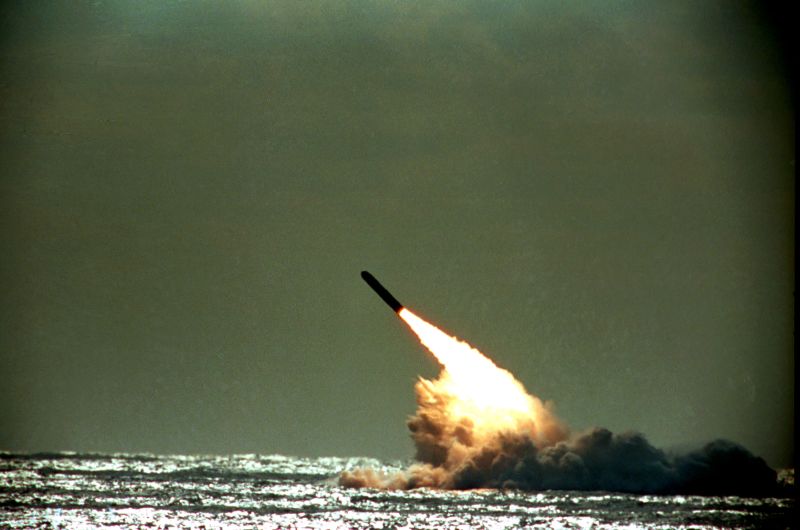
British Nuclear Missile Test Launch Faces Setback Off Florida Coast

A recent test launch of a British nuclear missile faced a setback at a site off the coast of Florida, raising concerns about the reliability of the Trident 2 ballistic missiles. This incident marks the second failure in eight years during trials, prompting scrutiny and questions about the country's nuclear deterrent system.
The Test Launch Anomaly
In a recent development that has sparked international attention, a British nuclear missile test launch encountered a significant setback off the shores of Florida. The Trident 2 ballistic missiles, a crucial component of the country's defense system, failed during a routine trial. This incident, described as an 'anomaly' by the UK Ministry of Defense, has raised concerns about the effectiveness and reliability of the missile systems.
A Trident II missile is launched by the US navy during a test in 1989.
The malfunction occurred on board the nuclear-powered submarine HMS Vanguard, highlighting the complexities and risks associated with testing advanced weaponry. Despite assurances from officials that the anomaly was isolated to the specific event and does not pose a wider threat to the Trident missile systems, questions linger about the overall security of the nuclear deterrent program.
This is not the first time such a failure has occurred, as reports indicate a similar incident in 2016 off the Florida coast. The recurrence of technical glitches during critical tests underscores the need for thorough evaluation and maintenance of the Trident 2 missiles.
Implications and Reactions
The repercussions of the failed test launch have reverberated across political and military circles, drawing attention to the vulnerability of the UK's nuclear deterrent system. With Minister of Defense Grant Shapps present on board the HMS Vanguard during the anomaly, the incident has raised concerns about the safety protocols and operational readiness of the submarines.
Opposition parties, including the Labour Party, have expressed apprehension over the reliability of the Trident 2 D5 missiles and called for transparency regarding the test failure. The upcoming parliamentary session is expected to address the implications of the incident and assess the impact on the country's defense capabilities.
The Ministry of Defense's assertion of the UK's nuclear deterrent remaining 'safe, secure, and effective' contrasts with the recent test failure, prompting a closer examination of the systems in place to safeguard national security interests.
Future of the Trident Program
As discussions unfold about the future of the Trident program, questions arise regarding the investment and operational viability of the nuclear-powered ballistic missile submarines. The significant annual cost associated with maintaining the Trident II D5 missile inventory underscores the financial commitments required for sustaining the country's nuclear deterrence capabilities.
The collaborative arrangement with the United States for sharing the Trident 2 missiles adds a layer of complexity to the strategic partnerships in the realm of nuclear defense. The incident off the Florida coast serves as a reminder of the intricate challenges inherent in maintaining and testing advanced military technologies.
With public scrutiny intensifying and calls for accountability growing louder, the upcoming discussions in Parliament are poised to shed light on the path forward for the UK's Trident program. The need for transparency, oversight, and continuous evaluation of the nuclear deterrent systems remains paramount in ensuring national security in an ever-evolving global landscape.







